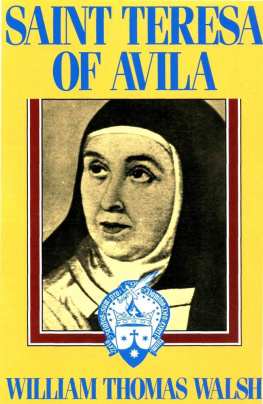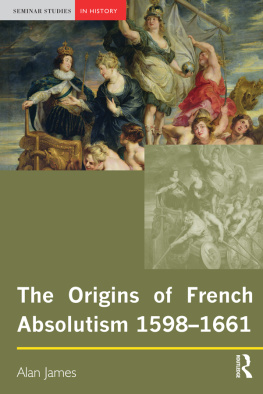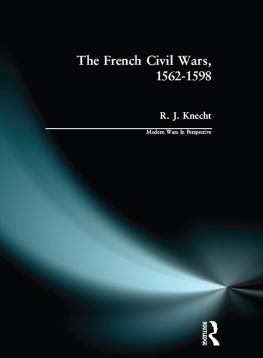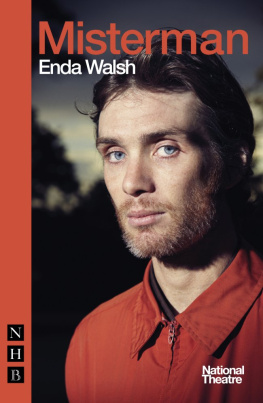William Thomas Walsh - Philip II: (1527-1598)
Here you can read online William Thomas Walsh - Philip II: (1527-1598) full text of the book (entire story) in english for free. Download pdf and epub, get meaning, cover and reviews about this ebook. year: 2015, publisher: TAN Books, genre: Non-fiction. Description of the work, (preface) as well as reviews are available. Best literature library LitArk.com created for fans of good reading and offers a wide selection of genres:
Romance novel
Science fiction
Adventure
Detective
Science
History
Home and family
Prose
Art
Politics
Computer
Non-fiction
Religion
Business
Children
Humor
Choose a favorite category and find really read worthwhile books. Enjoy immersion in the world of imagination, feel the emotions of the characters or learn something new for yourself, make an fascinating discovery.

- Book:Philip II: (1527-1598)
- Author:
- Publisher:TAN Books
- Genre:
- Year:2015
- Rating:4 / 5
- Favourites:Add to favourites
- Your mark:
- 80
- 1
- 2
- 3
- 4
- 5
Philip II: (1527-1598): summary, description and annotation
We offer to read an annotation, description, summary or preface (depends on what the author of the book "Philip II: (1527-1598)" wrote himself). If you haven't found the necessary information about the book — write in the comments, we will try to find it.
Philip II: (1527-1598) — read online for free the complete book (whole text) full work
Below is the text of the book, divided by pages. System saving the place of the last page read, allows you to conveniently read the book "Philip II: (1527-1598)" online for free, without having to search again every time where you left off. Put a bookmark, and you can go to the page where you finished reading at any time.
Font size:
Interval:
Bookmark:
Philip II
William Thomas Walsh
Copyright 1937 by Sheed & Ward, Inc., New York. First published in November, 1937, by Sheed & Ward, Inc. Copyright renewed in 1965 by Mrs. William Thomas Walsh.
Library of Congress Control No. 87-51071
All rights reserved. No part of this book may be reproduced or transmitted in any form or by any means, electronic or mechanical, including photocopying, recording or by any information storage or retrieval system, without permission in writing from the publisher, except that brief selections may be quoted or copied for non-profit use without permission.
Cover illustration: Philip II, by Pantajola de la Cruz. All rights reserved. Copyright Museo Nacional del Prado, Madrid.
TAN Books
Charlotte, North Carolina
1987
To the memory of a valiant woman
MARY WALSH (MCMAHON) HEALEY
who taught me to love truth

PHILIP II
BY PANTAJOLA DE LA CRUZ, NOW IN THE PRADO, MADRID.
Photo by Courtesy of the Metropolitan Museum of Art.
I wish to express my gratitude to the Columbia University Library for the use of a fine collection of State Papers and countless other books, as well as for the unfailing courtesy and efficiency of the librarians and staff; to the Library of Congress, for the loan of rare works; to Mother Grace C. Dammann, R.S.C.J., President, and Mother E. M. O'Byrne, R.S.C.J., Dean, of the Manhattanville College of the Sacred Heart, and to the faculty in general, for much cooperation and encouragement; especially to Miss Mercdes de Arango for invaluable help in translating the most gongoristic passages of Cabrera's Histria de Felipe el Segundo and some of the Italian correspondence; and to my daughter Betsy for a priceless suggestion.
W. T. W.
New York City, November 10, 1937

Contents
The happiness of the newly married Emperor, Charles V. His young wife, Isabel of Portugal, bears him a son and heir. Philip born in the palace at Valladolid, May 21, 1527. In the midst of the festivities the news reaches Spain that the Emperor's troops have taken part in the sack of Rome on May 6. Frightful state of Christendom. The shadows that fell on Philip's cradle.
Character of the Empress. Charles involved in affairs of State. Urges Pope Clement to summon a General Council for the reform of ecclesiastical affairs. The Pope hesitates. Charles fails to conciliate the Lutherans in Germany. The Empress and her children at Avila. Characteristics of the boy Philip. His tutors and his studies. The ideas that ruled his mind.
Bad news from England about the Emperor's aunt. Catherine's letter to Charles. Pope Clement's defence of his conduct. Henry marries Anne Boleyn, and Elizabeth is born. Execution of Fisher and More. The Emperor Charles unable to interfere because of his campaign in Africa against the Turks. Death of Philip's mother at Toledo.
Philip, at thirteen, learns the principles of government. At fifteen he goes to war under the tutelage of the Duke of Alba. At sixteen he is made Regent of Spain and marries his first cousin Maria, Infanta of Portugal, five months younger than himself. She dies in childbirth, leaving the young widower with a small son, Don Carlos. Philip's great sorrow.
Philip defends the Church against his father, the Emperor. Charles defeats the forces of the Smalkaldic League at Mhlberg and makes himself master of Germany, tries to have the Church reformed at Trent and allows it to be sold at Augsburg. He summons Philip to Germany as candidate for the Iron Crown of Charlemagne.
Two rival candidates for the Imperial crown. Secret Jews and Protestants in the Emperor's entourage. Some notable consequences of the expulsion of the Jews from Spain by Ferdinand and Isabel in 1492. The international Spice Trust. Orientation of European opinion for and against Philip. Marriage of his sister to Maximilian. He leaves Spain for Germany.
Philip considers a second marriage. Mystery of his private life. His love of power. Failure of his candidature for the Empire. Despondency of Charles. Opportunity for Philip in the negotiations for the hand of Mary Tudor of England. Sends gifts to Mary and leaves Spain for England, where he arrives at Southampton on Thursday, July 19, 1554.
Philip meets Mary for the first time and kisses her on the mouth in the English fashion. Marries her on July 25 in Winchester Cathedral. Juan Luis Vives, the Spanish humanist, Mary's tutor. Philip succeeds in formally reconciling England to the Holy See. He notifies the Pope and his sister Juana. Return of prosperity to England. Neglect of Charles and Philip to follow the advice from Rome. Arrival of Pole.
Philip in England as the young husband of a middle-aged woman. Queen Mary and her problems. Effects of Protestantism on English life. William Cecil. Philip's success in Parliament. His opposition to the persecution of the Protestants. The Queen's supposed pregnancy and what issues depended on it. Philip leaves England and goes to Brussels, where he is present at the Emperor's abdication on Friday, October 25.
Philip accepts responsibility for his father's debts. Rise of the power of money, and its encroachments upon monarchy. Striking personality of Pope Paul IV, and his view of the Papacy. Philip manages to save Elizabeth from execution. The ex-Emperor meets his grandson, Don Carlos.
Philip visits England a second time, and enlists aid for his war against France and the Pope. The Pope's unflattering opinion of him. His nocturnal amusements. Battle of St.Quentin. Reasons for the loss of Calais. His kindness to Mary. His neglect of her in her last illness. He ensures the succession of Elizabeth. His first difference with William of Orange.
The so-called English Reformation begins at Cambridge. Secret meetings at The White Horse Inn. Nicholas Bacon, Thomas Sackville, Francis Walsingham, Matthew Parker, Thomas Gresham, all belonged to Cecil's political machine. Elizabeth's incapacity for marriage. Philip toys with the idea of invading England from Flanders. He appoints as Regent of the Netherlands his half-sister Margaret. He returns to Spain.
Description of an auto de fe. Horrors of the Inquisition, and some of the other horrors that provoked and perpetuated it. Protestantism a new manifestation of an old attitude. Jewish precursors of the Lutheran revolt. Philip not a Jew-baiter. Corruption of the clergy. State interference in church affairs. Philip finds his half-brother, Don Juan of Austria.
The happiest year of Philip's life. Marries the eighteen-year-old Elizabeth of Valois. Honeymoon in the Alczar of Toledo. The bride gets smallpox. Eccentric conduct of Don Carlos in the Cathedral. Philip plans the Escorial. Influence of the Duke of Alba. Philip's love of pleasure and distaste for work. His popularity in Spain. His love for his wife. His routine in Madrid.
The Protestant Conspiracy in France and its international ramifications. Influence of l'Hpital over Catherine. Rise of the Chatillons. Coligny's betrayal of French interests. The First Huguenot War. The assassination of Guise. Cecil's intrigues in the Low Countries and in French politics. Menace to Philip. Philip gives advice to Catherine de' Medici.
Philip discovers the real nature of the government he has set up under Elizabeth in England. Protestantism introduced by a small well-organized minority of un-English character and foreign associations. Steps by which Cecil destroyed Catholicism in England. Thomas Gresham and the Merchants of Light. Throckmorton and Tremelius. The federate character of Protestantism
Next pageFont size:
Interval:
Bookmark:
Similar books «Philip II: (1527-1598)»
Look at similar books to Philip II: (1527-1598). We have selected literature similar in name and meaning in the hope of providing readers with more options to find new, interesting, not yet read works.
Discussion, reviews of the book Philip II: (1527-1598) and just readers' own opinions. Leave your comments, write what you think about the work, its meaning or the main characters. Specify what exactly you liked and what you didn't like, and why you think so.










